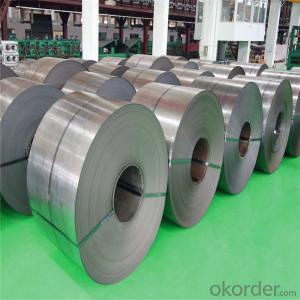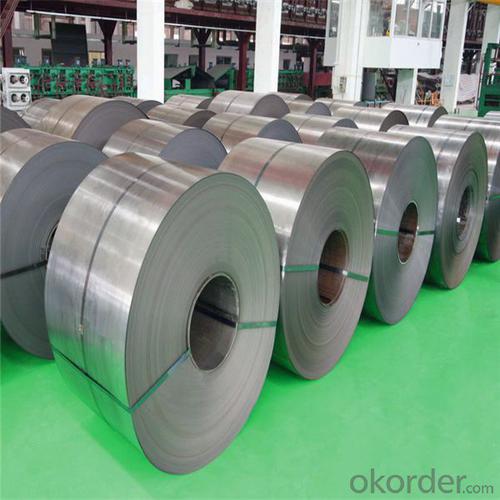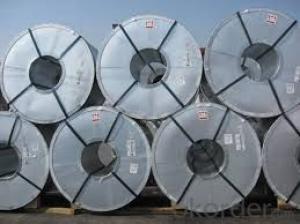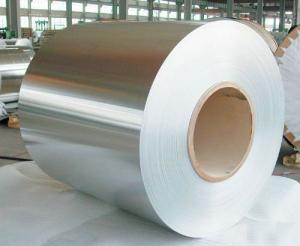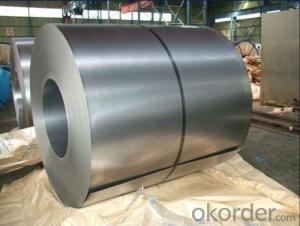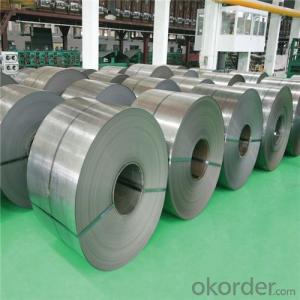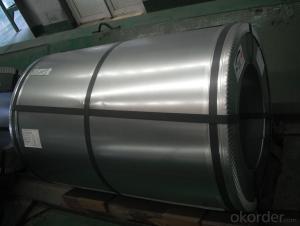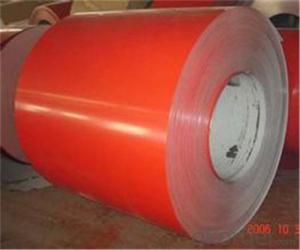Hot Rolled&Cold Rolled Galvanized Steel Coil
- Loading Port:
- China main port
- Payment Terms:
- TT OR LC
- Min Order Qty:
- 23 m.t.
- Supply Capability:
- 50000 m.t./month
OKorder Service Pledge
OKorder Financial Service
You Might Also Like
Specification
Product Description
Thickness: 0.16mm-1.20mm
Coil width:600mm-1250mm
Coil weight: 3.0-6.0MT
Surface finish : 60-120g/m2 zinc coating and any Ral code the customers requirment!
Spangle: Big Spangle,Small Spangle,Regular Spangle,Zero Spangle.
Steel grades: Q195-Q345,GR.A,GR.B, SPCC,SPHC,DX51D, ECT.
Standard: JIS G3302, JIS G3313, ASTM A653, GB/T2518-88, GB11253-89,ASTM A1008-2000,BS,ETC.
Packing: wrapped by plastic film and waterproof paper, and then fastened on wooden pallet.
Used in building material field,Pipe making, furniture making,others
Minimum order quantity : 25 tons
Delivery times : 20 days after received T/T or L/C
Payment terms : T/T or L/C ( or as your demand)
Supply abilty : 6,000 ton per month
Product Picture:
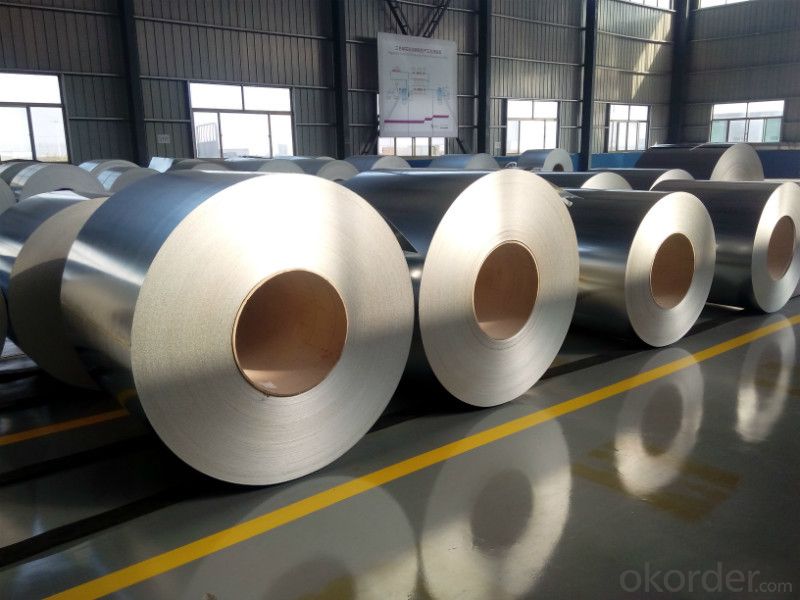
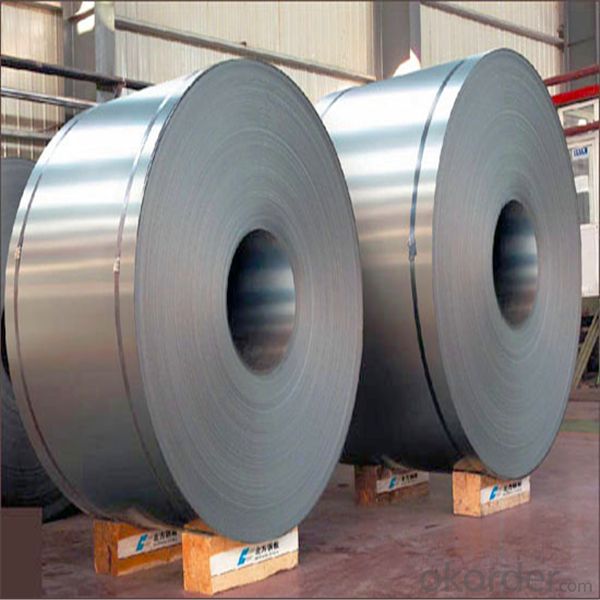
FAQ:
Size | (0.13mm-5.0mm )*(600mm-1500mm)*coil |
Steel Grade | JIS G3302 SGCC~SGC570,SGCH(FULL HARD-G550),SGHC~SGH540 EN 10346-DX51D+Z,DX53D+Z, S250GD~S550GD ASTM A653M CS-B, SS255~SS550 |
Coil Weight | 3MT-14MT |
Coil ID | 508mm/610mm |
Chemical Treatment | Chromated(Cr 3+,6+,0+) |
Surface | Skin pass/non skin pass |
Oil | Slight Oiled/Dry |
Spangle | Regular/Zero/Big |
Zinc Coating | Z40-Z300 |
Capacity | 1,500,000MT/year |
- Q: I've seen commuters that ride fixed gear and the traditional pista bike with gears. Now, as I saw on the bianchi website that you can mount front and rear brakes on the bianchi steel pista bike and I want to use it to ride to water polo and school.I've rode the ghetto fixed gear bike but it has gotten small for me. It was an aluminum bike. How strong is the steel? Is the frame strong enough to handle 150 lbs? Will the fork break easily if I ride over some cracks? Has anyone ridden the bianchi steel bike and the fork broke? HELP?Thanks.P.S. Please don't comment how I shouldn't use a pista bike on the road, if I can mount brakes then it can be used for road purposes.
- Steel is for real, all other materials compare them to steel. Carbon is a comfortable as steel, Alu is lighter and ti is less corrosive than steel. Steel is the standard that all other bikes are measured to.
- Q: How are steel coils inspected for thickness?
- Steel coils are inspected for thickness using various methods to ensure their quality and compliance with industry standards. One common method is using a non-contact laser measurement system. In this process, a laser beam is directed towards the surface of the steel coil, and the time it takes for the beam to reflect back is measured. By accurately calculating the time taken, the thickness of the steel coil can be determined. Another method involves using ultrasonic technology. Ultrasonic sensors are used to emit high-frequency sound waves that penetrate the coil. These sound waves bounce back differently depending on the thickness of the steel, allowing the sensors to measure the thickness accurately. Additionally, some manufacturers may opt for an eddy current testing method. This technique involves passing an alternating current through a coil, creating a magnetic field. The thickness of the steel coil affects the impedance of the coil, which can be measured. By analyzing the changes in impedance, the thickness of the steel coil can be evaluated. Furthermore, some companies employ a mechanical method called the caliper method. This method involves using a caliper gauge to physically measure the thickness of the steel coil by applying pressure to the coil and reading the measurement on the caliper. Regardless of the method used, it is crucial for steel coils to be inspected for thickness to ensure they meet the required specifications and provide the desired performance in various applications.
- Q: What are the common challenges in steel coil manufacturing?
- There are several common challenges in steel coil manufacturing that manufacturers often face. One of the major challenges is maintaining consistent quality throughout the manufacturing process. Steel coils need to meet specific specifications and standards, and any deviation from these can lead to product defects or rejections. This requires careful monitoring and quality control measures at each stage of the manufacturing process. Another challenge is ensuring efficient production and minimizing downtime. Steel coil manufacturing involves several complex processes, including cutting, forming, welding, and finishing. Any issues or delays in these processes can result in production bottlenecks, which can impact the overall efficiency and productivity of the manufacturing facility. Additionally, handling and storage of steel coils can pose challenges. Steel coils are heavy and can be difficult to handle, requiring specialized equipment and proper training for workers. Moreover, proper storage conditions need to be maintained to prevent damage from moisture, corrosion, or other environmental factors. Maintaining a safe working environment is also a challenge in steel coil manufacturing. The equipment and machinery used in the manufacturing process can be hazardous if not operated and maintained properly. Ensuring the safety of workers and implementing appropriate safety protocols is crucial to prevent accidents and injuries. Lastly, fluctuating raw material costs and market demands can present challenges for steel coil manufacturers. The cost of raw materials, such as iron ore and scrap metal, can significantly impact the profitability of the manufacturing process. Additionally, market demands for specific types of steel coils may change, requiring manufacturers to adapt and adjust their production accordingly. In conclusion, common challenges in steel coil manufacturing include maintaining consistent quality, achieving efficient production, handling and storage issues, ensuring a safe working environment, and dealing with fluctuating raw material costs and market demands. Overcoming these challenges requires careful planning, continuous improvement, and effective management of resources and processes.
- Q: I have a set of Ben Hogan Apex Plus Forged Irons, how can i figure out if the shafts are steel or graphite?
- Most steel shafts are stepped, meaning there will be a series of ridges that run down the lengeth of the shaft every few inches. Also, take a piece of metal and tap the shaft with it. If it makes a ping type of sound, its metal. If it makes a clunk sound, its graphite. Or, look out the window and ask the first person you see walking by. Unless they are younger that 10 years old, they should be able to tell you pretty easily.
- Q: What are the common industry standards for steel coils?
- The common industry standards for steel coils include specifications related to dimensions, weight, chemical composition, mechanical properties, and surface finish. These standards are often set by organizations such as the American Society for Testing and Materials (ASTM), International Organization for Standardization (ISO), and the Steel Industry Associations.
- Q: What are the common applications of steel coils?
- Steel coils have a wide range of applications, commonly used in industries such as automotive, construction, manufacturing, and appliances. They are utilized for making various products including automobiles, pipes, electrical appliances, roofing, and packaging materials.
- Q: Can steel coils be coated with electrically conductive materials?
- Yes, steel coils can be coated with electrically conductive materials.
- Q: for my engineering project I have been asked to design a method of suspending a TV of weight 14Kg from a gantry, the TV must be 5m below the gantry. My team have decided to use as a suspension method a steel cylinder of outer diameter of 10cm and an inner diameter of 8, however we now need to work out both the max stress and strain and the actual stress and strain. and help would be useful
- In most engineering calculations we have to make some assumptions about ideal behavior of a material otherwise we would not be able to simplify our equations to manageable sizes. Your steel cylinder (which I'll call a pipe) is made of a certain type of steel. That steel type has property tolerances listed in a steel manual to help you know about your steel before you begin. You'll need to know the cross-sectional area of the pipe and the weight of the TV to determine an average stress on the pipe. Obviously the weight of the TV is the force it generates. The force is its mass x gravitational acceleration. Since we typically think of steel as an elastic material, we think of it stretching like a rubber band or a spring. You pull it down with a TV and it deflects a certain amount, and will return to its original length when the TV is removed. It is typical to assume that all steel, regardless of its strength, has the same value for this elastic property. It is commonly referred to as the elastic modulus. This value will help you determine what type of strain occurs under what type of stress. So, once you have the stress, you can get the strain by using the elastic modulus. Once you have the strain you can determine the deflection based on the pipe length. Having the steel properties will help you determine how close your TV comes to stressing the pipe to its yield stress. If you reach a yield stress, your steel will deflect, but when you take the TV off it will not return to its original shape. I hope I've helped outline some of the things you'll need to do for the project, I tried not to give away specifics so that you can actually engage your brain around the project. Enjoy, learn a lot, and realize that this skill could easily turn into a career where you are designing projects that when done correctly save people's lives every day of the year.
- Q: How are steel coils protected from condensation?
- Steel coils are typically protected from condensation by applying a thin layer of oil or another corrosion-resistant coating to the surface. This acts as a barrier, preventing moisture from coming into direct contact with the steel and minimizing the risk of condensation forming. Additionally, the coils are often stored in a controlled environment with proper ventilation to minimize humidity levels and prevent condensation from occurring.
- Q: How do steel coils contribute to energy performance in buildings?
- Steel coils contribute to energy performance in buildings primarily through their use in HVAC systems. Steel coils are commonly used in heating, ventilation, and air conditioning (HVAC) systems as heat exchangers or condenser coils. These coils help in transferring heat between the indoor and outdoor environments, allowing for effective heating or cooling of the building. The high thermal conductivity of steel enables efficient heat transfer, optimizing energy usage and enhancing the overall energy performance of the building. By facilitating appropriate temperature control and reducing energy consumption, steel coils play a vital role in improving the energy efficiency of buildings.
Send your message to us
Hot Rolled&Cold Rolled Galvanized Steel Coil
- Loading Port:
- China main port
- Payment Terms:
- TT OR LC
- Min Order Qty:
- 23 m.t.
- Supply Capability:
- 50000 m.t./month
OKorder Service Pledge
OKorder Financial Service
Similar products
Hot products
Hot Searches
Related keywords
